The Gift of South Dakota
Subscriptions to South Dakota Magazine make great gifts!
Subscribe today — 1 year (6 issues) is just $29!
Too Many Counties?
May 5, 2015
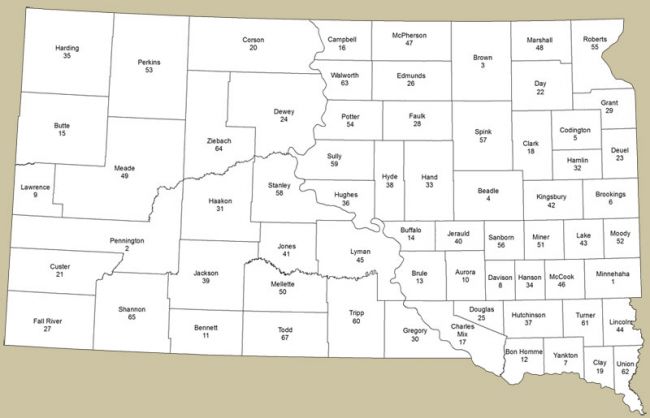 |
| South Dakota's 66 counties have been arranged like this since 1983. |
Does South Dakota have too many counties? It’s a long-discussed topic that resurfaced at Augustana College’s annual Dakota Conference in April. Bill Peterson, a former legislator from Sioux Falls, discussed the county consolidation proposal he brought to the legislature in 1998. It would have required South Dakota reorganize into no fewer than 15 counties and no more than 30 by 2005. Despite touting its cost savings – something that generally catches the attention of frugal South Dakotans – the plan got very little traction.
Neither did a joint resolution that appeared before the legislature in 2009. It would have placed a constitutional amendment on 2010 general election ballot to limit counties to 25,000 people or 5,000 square miles, whichever was less.
Peterson and his co-presenter, Joe Kirby, cited the dramatic population shift from rural to urban areas of South Dakota. It’s been happening for decades and it’s very likely to continue, meaning some form of reorganization is probably inevitable. Yet here we are in 2015 with the same patchwork of 66 counties that we’ve known since 1983, when Washabaugh County was absorbed into Jackson County and became South Dakota’s last county to be eliminated.
A few years ago, we embarked on a search to find one interesting spot in every county that we thought people might like to see. After our “66 counties tour” feature appeared in the magazine, several readers wrote to tell us that they had set out on their own South Dakota road trips, magazine in hand, to see the places we’d written about.
There are fun and interesting things to be found in each county, so while we still have all 66, let’s celebrate them. Beginning today, and continuing every two weeks, we’ll pick one South Dakota county and write about the unique facts and places that we’ve discovered in our travels there. As always, we encourage additions to our reports. Please leave a comment if you’re a resident, a South Dakota native reading from afar or anyone with an interest in the featured county.
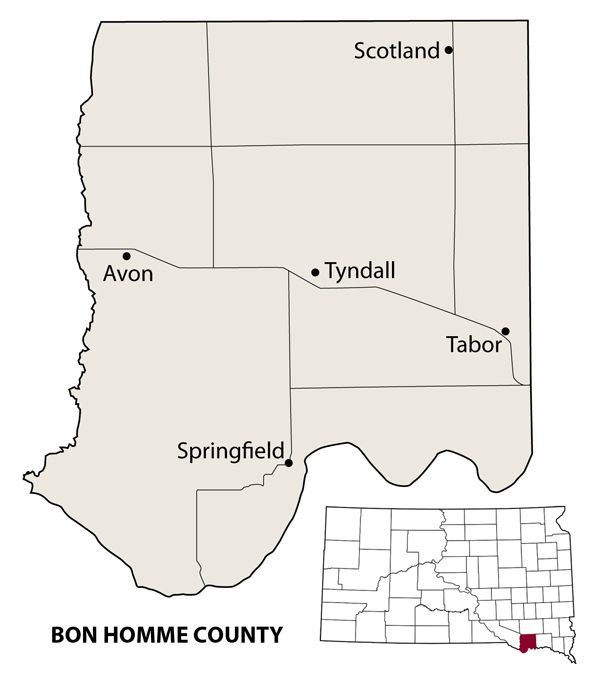 |
Our first installment features Bon Homme County, officially organized in 1862. Its recorded history reaches back to the Lewis and Clark Expedition, which floated into the area in the late summer of 1804. The explorers noted in their journals passing a large island in the Missouri River called Bon Homme Island. The exact origins of the name are unclear, but some speculate that a Frenchman lived on the island and was considered a good man (“bon homme” in French) to local Indians, who bestowed that title upon the land.
The area’s earliest settlers relied on the fur trade for their livelihoods. The first trading post in the county was opened by Emanuel Disaul in 1815 at the mouth of Emanuel Creek west of Springfield. Zephyr Rencontre built a station on Bon Homme Island in 1828.
The county was effectively opened to non-Indian settlement after an 1858 treaty that required the Yankton Sioux Indians to relocate west of Chouteau Creek, just beyond the present county’s western boundary. John Shober and several families from Minnesota arrived in 1858, just before the treaty was signed. Soldiers from nearby Fort Randall, charged with keeping trespassers off Indian lands, disassembled their log homes and threw them into the river. They returned in 1859 and began a more permanent settlement.
Shober and his party are credited with establishing the first schoolhouse in what would be Dakota Territory. Ten students enrolled in the spring of 1860 under the tutelage of Emma Bradford. The original school building has disappeared, but a replica still stands a few miles east of Springfield.
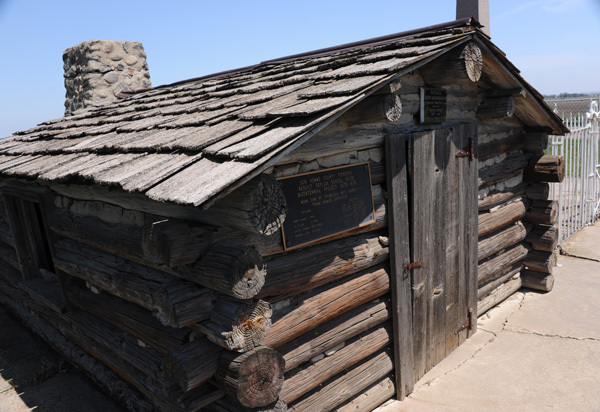 |
| A replica of the first schoolhouse in Dakota Territory stands near the Missouri River in Bon Homme County. |
Bon Homme County’s land appealed to settlers from across the ocean, as well. Hutterites, long oppressed in Europe, sent scouts to Dakota Territory in the early 1870s, looking for a place to establish a colony. They liked what they saw along the banks of the Missouri River and bought 2,500 acres of land in 1874 from notorious Indian agent Walter Burleigh. Bon Homme Colony became the first Hutterite colony in North America, and has been continuously occupied ever since.
Bon Homme County is the resting place of six unknown soldiers belonging to George Custer’s Seventh Cavalry. The men were camped along Snatch Creek in May of 1873 when several soldiers contracted typhoid fever. Seven men – six unknown and one identified – were buried along the banks of the creek. Later they were moved to the Bon Homme Cemetery, where a large stone marks their burial place.
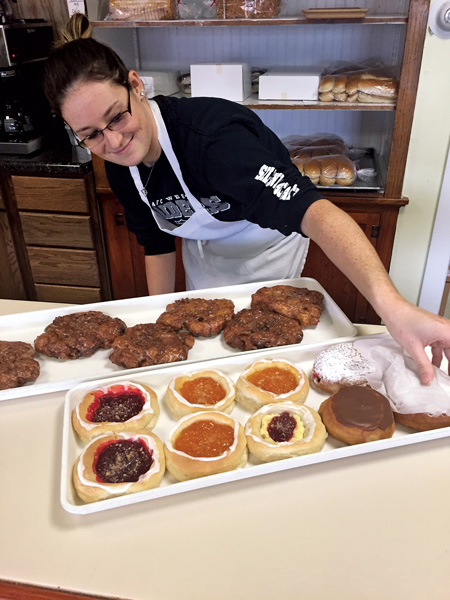 |
| Veronica Sanders helps prepare kolaches at the Tyndall Bakery. |
Every county most likely has a skeleton in its closet, and Bon Homme is no different. The first tumbleweed ever reported in North America was found near Scotland in 1877. Its origins were probably in a shipment of flax seed from Ukraine.
Today just over 7,000 people live on farms and in Bon Homme County’s five towns – Avon, Scotland, Tyndall, Springfield and Tabor. Immigrants from Czechoslovakia settled around Tabor beginning in 1869, and their culture is still evident at Czech Days, the town’s annual June festival. If you don’t make it to Czech Days, you can still buy kolaches – a traditional fruit-filled Czech dessert – at bakeries in Tabor and Tyndall.
Tyndall, the county seat, boasts a miniature replica of the Eiffel Tower on the courthouse lawn. County commissioners voted to erect the tower as a memorial to South Dakotans who fought during the Spanish-American War.
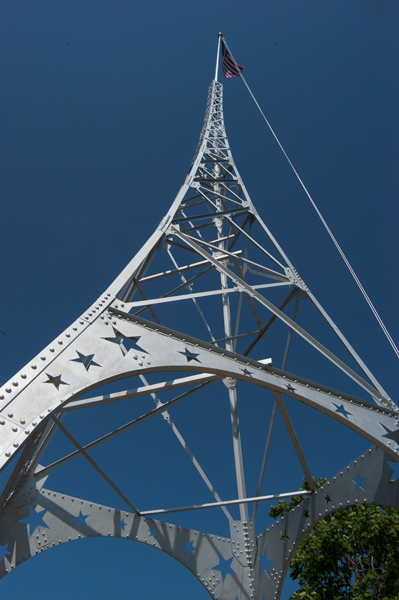 |
| Tyndall's miniature Eiffel Tower. |
On our most recent trip through Scotland, we met Victor Settje, who is carefully dismantling St. Andrew’s Episcopal Church, built in 1886. He’s hoping to find new uses for every board, including the old wooden cross.
The town’s VFW Hall boasts a new 5-by-10-foot painting by Menno airbrush artist Mickey Harris that honors a local World War II veteran. Leon Woehl was aboard a B-17 that crashed in Germany in 1944. Harris’ painting depicts the crash and the Nazi soldiers looking for Woehl and the eight other crewmembers who hid in the woods until their capture.
Springfield sits right on the Missouri River, so it makes sense that Greg Stockholm is in the midst of crafting a 68-foot boat. You can see the work in progress outside his shop at 811 College St.
Avon is the hometown of Sen. George McGovern, whose father served the Methodist church in town before moving his family to Mitchell. The museum includes memorabilia from the McGoverns.
The history, the river and the ethnic traditions all make Bon Homme County fun to explore, especially if you enjoy the kolaches and ignore the tumbleweeds.
Editor's Note: This is the first in a series of articles featuring South Dakota's 66 counties. Click here to read other installments.




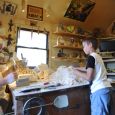





Comments